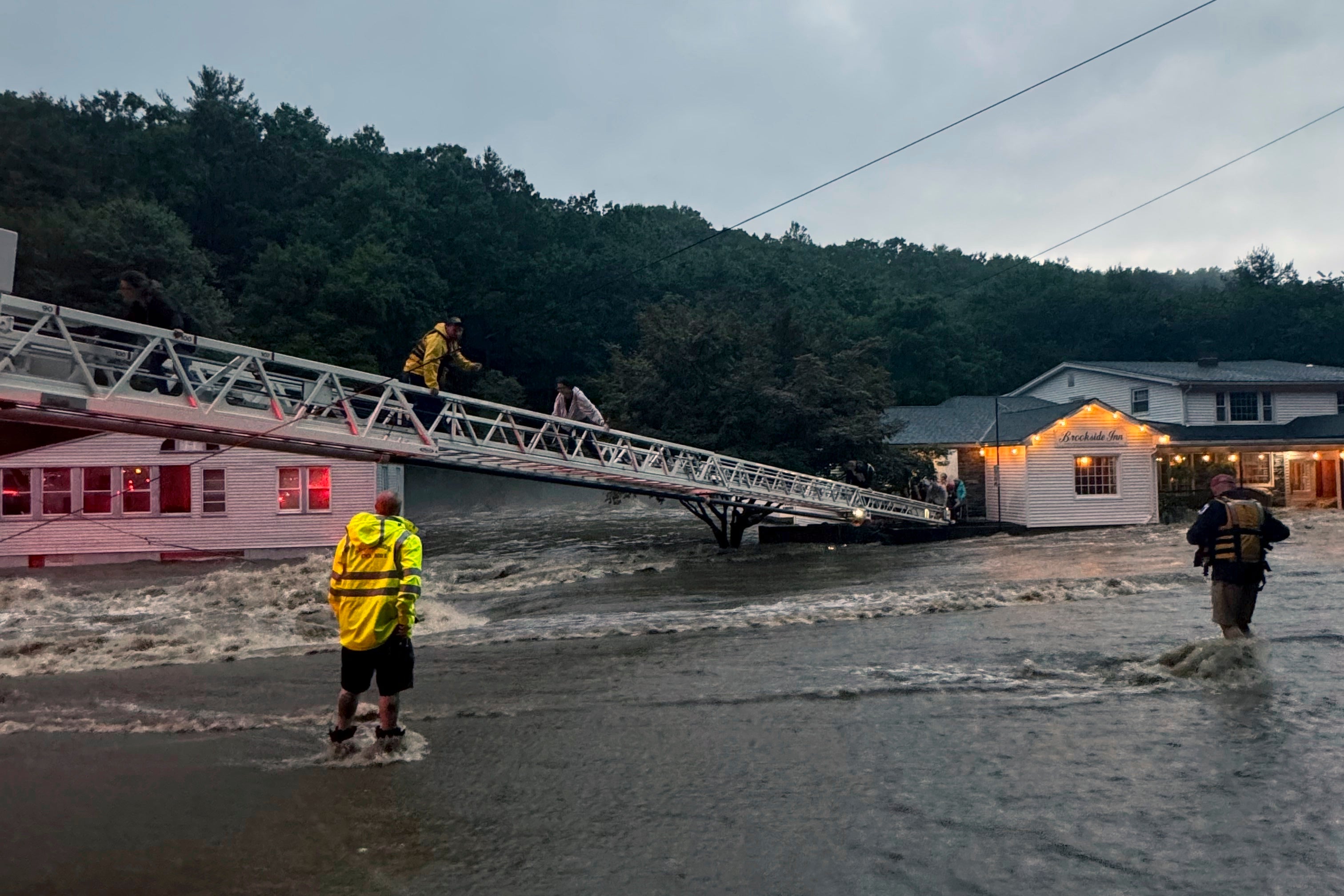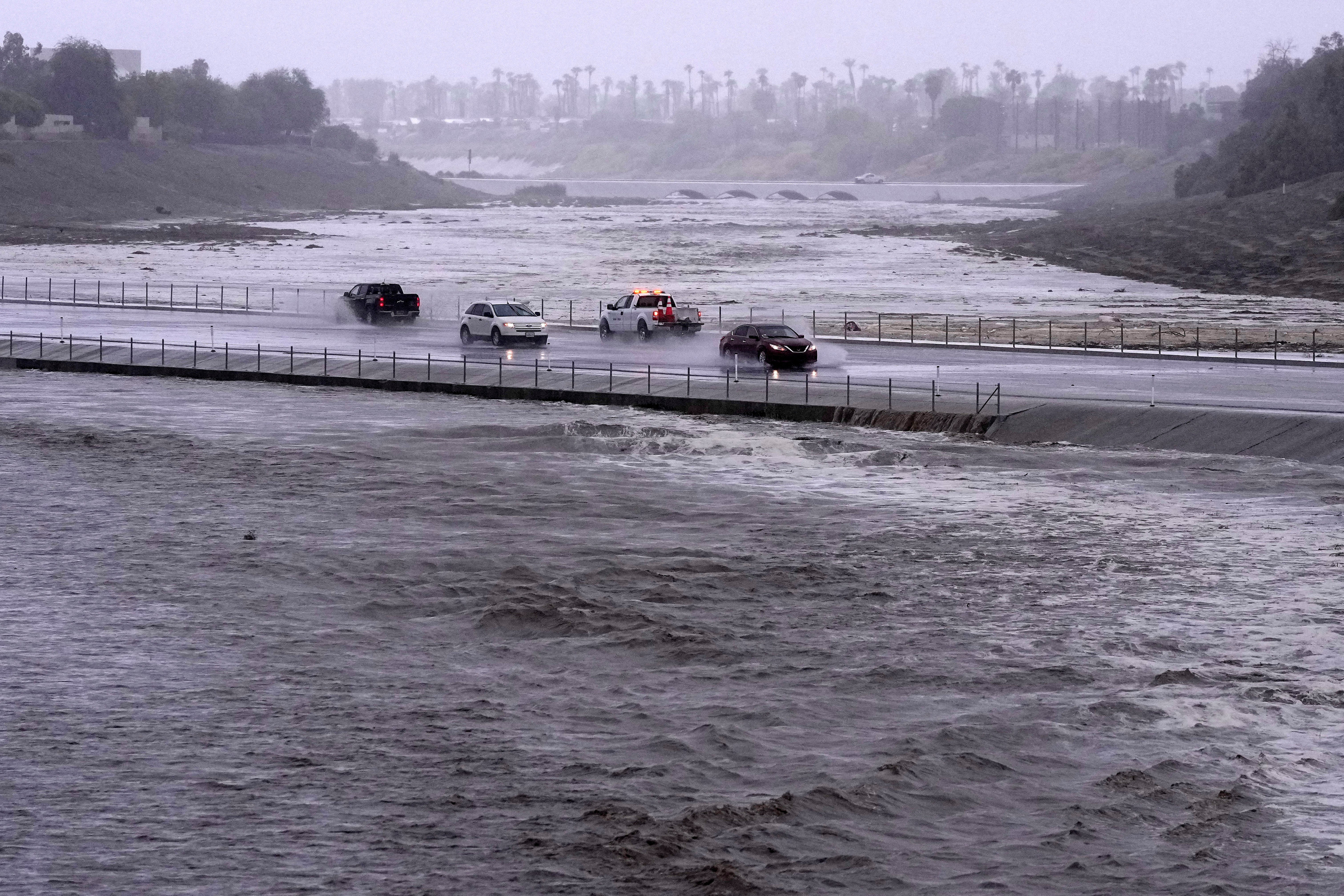Flash floods have deluged the Northeast. Climate change will only make them worse
A Connecticut flooding emergency left two people dead
Connecticut Governor Ned Lamont signed an emergency declaration on Monday afternoon following deadly flash floods that killed two women.
In a statement, the Democrat said that historic flooding had also washed out bridges and damaged multiple structures. As of mid-Tuesday morning, 15 state roads and two state parks remained closed in and around southwestern Connecticut.
Connecticut State Police Commanding Officer Col. Daniel Lockman said Monday that the women were swept away by floodwaters in the town of Oxford. Their bodies are believed to have been recovered but their identities have not been made public. Hundreds of others were rescued in swift water evacuations and the state opened several shelters in response to the crisis.
“We are talking about rainfall, in some areas, in the thousand-year level,” Brenda Bergeron, the DESPP deputy commissioner, explained. “So it’s really historic, unprecedented flooding.”

The National Weather Service’s New York office wrote on social media that local rainfall amounts totaled over 10 inches in southwestern Connecticut and northwestern Suffolk County. The fast-moving thunderstorms also hit New York City, flooding public transportation and city streets.
While the severe flooding was unusual, extreme rain and flood events are expected to increase in severity and frequency due to climate change.
Last year, flooding in California, Florida, the Northeast, and the eastern U.S. cost billions of dollars. The National Oceanic and Atmospheric Administration’s (NOAA) Center for Environmental Information said 2023 saw the most billion-dollar disasters in the first seven months of any year since 1980.

As the Earth continues to warm, bringing record temperatures, more water is able to evaporate from our oceans. Evaporation is the process that changes liquid water to water vapor.
Heat from the oceans also rises, making an environment more hospitable to storm formation.
The vertical transport of heat and moisture in the atmosphere is known as “convection,” but convection and thunderstorms are commonly interchangeable, according to NOAA. Still, the agency notes that thunderstorms are only one of the forms of convection.
Researchers at the Massachusetts Institute of Technology’s Center for Global Change Science have said existing climate models show that approximately one-third of the anticipated global warming from increased carbon dioxide levels — the most dominant U.S. greenhouse gas — is brought by an increase of water vapor due to more evaporation with rising temperatures. They said increased evaporation was likely to lead to increased convection.

The United Nations Intergovernmental Panel on Climate Change’s Sixth Assessment Report said human influence has likely increased the chance of “compound extreme events” since the 1950s, including compound flooding, drought, and heatwaves.
The report said that the most vulnerable people and systems have been disproportionately affected by the impacts of climate change.
The Independent will be revealing its Climate100 List in September and hosting an event in New York, which can be attended online.
Join our commenting forum
Join thought-provoking conversations, follow other Independent readers and see their replies
Comments
Bookmark popover
Removed from bookmarks